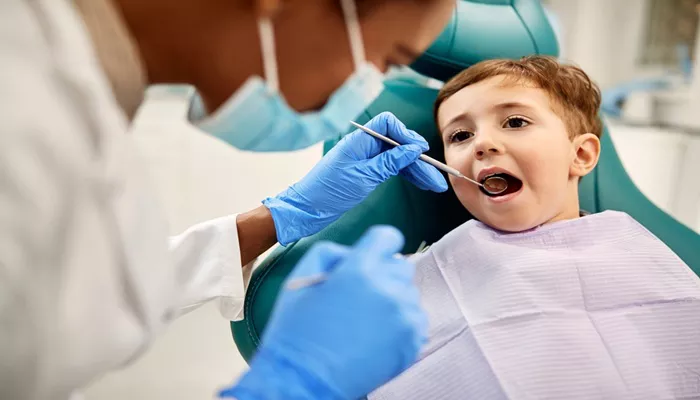Endodontic procedures in pediatric dentistry focus on treating infections, injuries, and decay affecting the dental pulp of primary and young permanent teeth. These procedures help preserve the natural structure of a child’s teeth, ensuring proper oral function and development. When the pulp inside a tooth becomes inflamed or infected, a dentist may recommend an endodontic treatment to save the tooth and prevent further complications.
This article will explore the different types of endodontic procedures in pediatric dentistry, their benefits, and when they are necessary.
Understanding The Dental Pulp in Children
The dental pulp is the innermost part of the tooth, consisting of nerves, blood vessels, and connective tissues. In children, this pulp is more sensitive and has a higher ability to heal compared to adults. However, due to cavities, trauma, or infection, the pulp may become inflamed or damaged, necessitating an endodontic procedure.
Common Endodontic Procedures in Pediatric Dentistry
There are several endodontic treatments designed specifically for children, depending on the severity of the pulp damage.
1. Pulp Therapy
Pulp therapy is a broad term that refers to treatments addressing pulp damage. The goal is to maintain the integrity of the affected tooth and avoid premature tooth loss.
Pulpotomy
A pulpotomy is a procedure where the infected portion of the pulp is removed while the healthy portion remains intact.
This treatment is commonly used when the damage is confined to the crown portion of the tooth. After the removal of the infected pulp, a medicated material is applied to promote healing, and the tooth is restored with a crown to protect it.
Pulpectomy
A pulpectomy is a more extensive procedure where all of the pulp tissue is removed from both the crown and root canals of the tooth. This is done when the entire pulp is infected. After the pulp is removed, the canals are cleaned, disinfected, and filled with a biocompatible material. The tooth is then restored with a crown to maintain its function.
2. Root Canal Treatment for Young Permanent Teeth
When a young permanent tooth has significant decay or trauma but is still developing, a root canal may be necessary.
Unlike adult root canals, pediatric root canals often use materials that support continued tooth development. A root canal helps prevent premature tooth loss and maintains alignment in the child’s developing dentition.
3. Apexogenesis
Apexogenesis is performed when the pulp is injured but still has the potential for healing. In this procedure, a medicated dressing is placed over the pulp to encourage the root to continue developing naturally. This helps maintain the tooth’s function while preserving its growth potential.
4. Apexification
Apexification is done when a young permanent tooth has an open root apex due to trauma or decay. The procedure involves placing a material, such as calcium hydroxide or mineral trioxide aggregate (MTA), at the root tip to stimulate the formation of a hard tissue barrier. This helps stabilize the tooth and prevent bacterial invasion.
When Is An Endodontic Procedure Necessary?
Endodontic treatments in children are recommended when:
The tooth has deep decay reaching the pulp.
The child experiences prolonged tooth pain or sensitivity.
There is an infection or abscess near the root of a tooth.
The tooth is fractured or injured, exposing the pulp.
There is swelling or pus around the affected tooth.
Benefits of Endodontic Procedures in Pediatric Dentistry
These treatments offer several advantages, including:
Preserving Natural Teeth: Keeping the primary or permanent tooth intact ensures proper chewing, speech development, and alignment.
Preventing Infection Spread: Treating an infected pulp prevents bacteria from spreading to other teeth or areas of the mouth.
Avoiding Premature Tooth Loss: Losing primary teeth too early can lead to misalignment and spacing issues.
Reducing Pain and Discomfort: These procedures alleviate pain and restore oral health.
Conclusion
Endodontic procedures in pediatric dentistry play a crucial role in maintaining a child’s oral health by treating infections and preserving teeth. Whether it’s a pulpotomy, pulpectomy, or root canal therapy, these treatments ensure that children retain their natural teeth for as long as possible. If a child experiences tooth pain or signs of infection, consulting a pediatric dentist promptly can help determine the best course of action. By addressing dental issues early, parents can support their child’s long-term oral health and overall well-being.

